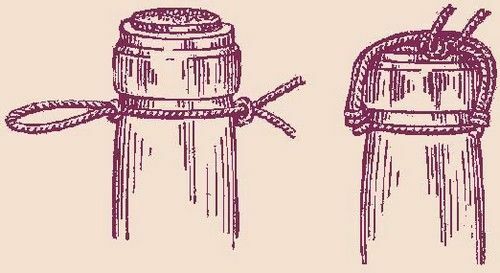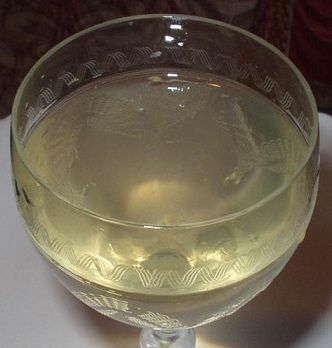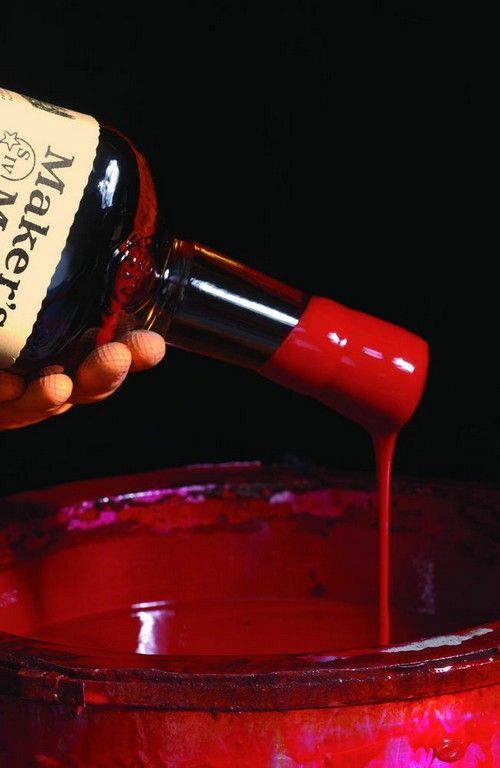- Classic cooking technology
- Simplified method
Today, buying champagne is not a problem. But at a moderate price, you can buy something that resembles a sparkling wine, and natural is expensive. Therefore, you can try to make champagne from gooseberries at home, especially since in the absolute naturalness of such a drink you will not have to doubt, and its cost price will be much lower than the price of even the cheapest factory champagne.

Classic cooking technology
There are 2 methods of making champagne. In one case, carbon dioxide, which is released from the drink in the form of bubbles, is formed in hermetically sealed containers naturally by fermentation processes. In another case, carbonic acid is pumped artificially into the wine. Of course, at home champagne is prepared according to the first method, which is simpler from a technological point of view, and is a guarantee that the finished drink will have a pleasant, refreshing taste. The method includes such stages as:
- fermentation of young wine;
- wine degassing;
- topping and dressing;
- extract.
Fermentation in bottles
In a 10-liter bottle, fill:
- 3 liters of gooseberry juice( it should be squeezed out so that it does not contact any metal surface, otherwise the taste of wine will be spoiled);
- 2 kg of granulated sugar;
- 5 liters of water.
The throat of the container is closed with a rubber stopper with a hole into which it is necessary to lower a long tube, the second end of which is immersed in a jar of water. The whole system is left in a sufficiently warm room until 20-30 bubbles appear in the jar with water every minute. Once this happened, proceed to pour the young wine into the bottles.
Warning! Champagne bottles should be chosen because they have thick walls. If we take conventional bottles, then under the influence of the growing pressure of the evolved gases they can simply be broken.
In each filled up to the brim with a bottle of a couple of dry raisins and 1 tsp.sugar, to activate the fermentation process, and are well corked. To this end, you can use the plugs that the champagne was closed at the factory. If the plastic is too thick and tight, immerse the plugs in boiling water - they will quickly soften. In addition, the neck of each bottle is tied with a wet cord. The procedure is best carried out in a cool room, and the bottles intended for bottling must be cooled beforehand, for example, in a refrigerator. Spilled wine is laid horizontally in a room, the temperature in which is between 18-21 ° C.It is left for 2-3 months.

cord Attention! If during this time any of the bottles explode, this is a sign that the temperature in the room is too high, and, therefore, the champagne needs to be moved to a colder place or otherwise lowered the air temperature.
After about 62-65 days, the fermentation process in bottles stops. Once this happens, they are moved from the horizontal to the inclined position, with an angle of inclination of about 45 ° C.Then champagne from gooseberries is left again for 2.5 weeks, but this time the temperature in the room should not exceed 10-12 ° C.In this case, the bottles must be rotated daily around the axis, so that the sediment falls to the plug.

Tip: To make an ideal champagne storage rack, it is enough to build a regular miniature ladder from the plywood, the height of the steps is only a little more than the diameter of the bottle. Then in the corner of each step make round holes. In them, and dip the bottles with their necks down.
Wine decontamination
Of course, drinking wine with sediment is not very pleasant, so good winemakers try to always remove it, but this process requires a certain skill. As a rule, it is carried out in the same room where wine was insisted, or in a colder place. Preliminary it is necessary to prepare a sludge tank, new plastic plugs, wet cord pieces and a sharp knife.
Bottle with champagne carefully, not to shake up the sediment, pull it out of the rack and free it from the cord, without changing its position. Once the cord is removed, the cork will be squeezed out by itself, so by holding it with your finger, the bottle is brought to the stored sludge tank and the cork is released. It quickly flies along with the accumulated sediment, so you need to be very careful and timely plug the neck with your finger. Although, of course, the loss of wine is inevitable.
Advice: it is better to spend the procedure together.

. Topping and savoring
. If a lot of wine has poured out during the removal of the sludge, you can make up for its loss by specially prepared tincture or liqueur. But since we are preparing champagne from gooseberry at home, it is reasonable to add a gooseberry liqueur.
For its preparation, 800 g of ripe berries are washed and dried on a towel. Then they knead in a mortar with a wooden or porcelain pestle. In the resulting puree, 800 g of sugar is introduced, mixed and left for a day. After that, the mass is transferred to a glass jar, into which a bottle of brandy is added and tightly closed. The tincture is considered ready in 2-3 weeks. Berry mass is well squeezed, and then filter the drink. It is stored in hermetically sealed glass containers in the refrigerator.
Prepared in this way, the liquor is enough for 20-25 bottles of champagne. It is added with a watering can or tube immediately after removing the sediment, turning the bottle upright. And as soon as the liquid level reaches the narrowing of the neck, the champagne is quickly sealed with a new stopper, tied with a wet cord and poured with a sealing wax or paraffin.
Extract
In general, champagne is already ready for use, but that it could be considered a top quality drink, you need to store bottles for at least 3-5 months in a horizontal position in a room with a temperature of 6 to 10 ° C.

Simplified method
Champagne from gooseberries can be prepared by a simpler scheme. The transferred and washed berries are passed through a crusher or crushed in another way, placed in a wooden barrel and covered with a film. After 2-3 days, the shed juice is poured into plastic containers or bottles. During these days, the mass can be mixed several times.
The remaining cake is squeezed with a press or gauze, and the resulting juice is added to the sludge. Capacities are covered with covers so that there is a small gap. The juice is left for 2 days to play and stand up. During this time, the leaked particles of the oilcake fall to the bottom and due to the accurate straining of the wine, they can be easily removed.
The fermenting juice of gooseberries is mixed with sugar, and for every 10 liters you need only 0.3 kg of sugar, and pour into a narrow-necked bottle, filling it with no more than 2/3.The neck of the vessel is sealed with a lid with a tube, one end of which is 10-15 cm above the wine level, and the other is placed in a jar of water. The wine is left for 40 days.
Prepared in this way, the drink is poured into 2-liter plastic bottles, each of which is put 1 tbsp.l.well washed rice and 3 tbsp.l.sugar, if you want to get a sweet champagne, or 1.5 tbsp.l.sugar, if you want to get a semi-sweet drink. Bottles to the top filled with wine and screwed with covers. For sugar to dissolve, they are turned upside down for a while.
Attention! Used in the preparation of champagne rice should not be steamed.
Ready-made bottles of champagne are placed in a cellar or in another room where the temperature does not exceed 6-8 ° C.
